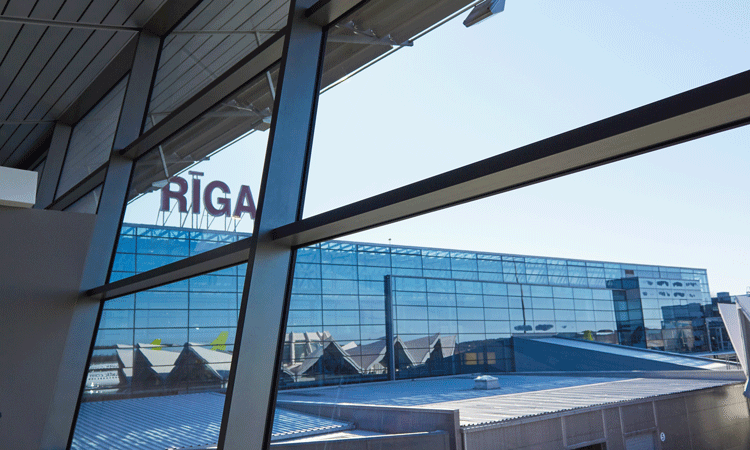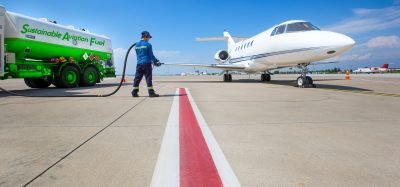Riga Airport’s future strategy plans for new passenger terminal
- Like
- Digg
- Del
- Tumblr
- VKontakte
- Buffer
- Love This
- Odnoklassniki
- Meneame
- Blogger
- Amazon
- Yahoo Mail
- Gmail
- AOL
- Newsvine
- HackerNews
- Evernote
- MySpace
- Mail.ru
- Viadeo
- Line
- Comments
- Yummly
- SMS
- Viber
- Telegram
- Subscribe
- Skype
- Facebook Messenger
- Kakao
- LiveJournal
- Yammer
- Edgar
- Fintel
- Mix
- Instapaper
- Copy Link
Posted: 16 February 2022 | International Airport Review | No comments yet
Riga International Airport looks ahead to the future of the construction of its new airport passenger terminal, with an area of 30,000 m2 and the capacity to serve up to 12 million passengers annually.


From an airport to an airport city
The airport future strategy provides for the development of the airport city concept, which offers not only aviation services, but also creates business ecosystems, ensures excellent connections, and offers new opportunities both for the residents and development of businesses, which are not directly related to aviation sector.
The future city centre of Riga International Airport (RIX) will include the new airport passenger terminal with an area of 30,000 m2 and the capacity to serve up to 12 million passengers annually, and it will be connected with Rail Baltica railway station to form a unified and multi-modal transport hub. The airport business city RIX Business Park will be developed around it to offer hotels, office centres, logistics, air cargo and e-commerce warehouses, creating development possibilities for a great variety of business and creating new jobs.
“We will develop the airport city as a multi-modal traffic and logistics centre connecting various modes of transport and creating a successful environment for business development. By ensuring varied services, work, meetings, knowledge exchange and recreation for the travellers and local residents, Riga Airport will be formed into a self-sufficient destination,” said Artūrs Saveljevs, Airport Board Member.
Airport future strategy provides that while developing the range of destinations, increasing the number of passengers and cargo turnover, investing in an advanced and sustainable airport infrastructure and services, Riga Airport has set a goal to become a significant aviation centre of the Northern Europe within the following years, that way promoting connectivity and competitiveness of Latvia within the region.
The strategy has seen revision and updates on Riga Airport goals, mission and vision, creation of new carriage forecasts, inclusion of principles for the company’s corporate management and sustainability activity, updates to development plans and projects, as well as renewed investment plan and financial performance to be achieved by 2027.
The new strategy provides for achieving nine million passengers and 48.5 thousand tonnes of air cargo serviced per year by 2027, as well as increased punctuality in departures. At the same time, it includes the green goals to reduce the carbon dioxide emissions. The annual net turnover of the airport in 2027 has been planned in the amount of €77 million, whereas €247 million in total investment will be exceeded during the activity period of the strategy.
Responsibility for environment
The airport’s strategy ‘Runway 2027’ also provides for the implementation of significant measures in sustainability so that the airport’s long-term business success, strategic goals and tasks would be achieved by responsible and balanced actions in all aspects of sustainability: impact on climate change, effective use of resources, environmental and nature protection goals, economic impact of the airport, employment, transparent management, involved of the local community, and reduction of noise.
By joining the international Airport Carbon Accreditation (ACA) programme and Airport Council International (ACI Europe), and Net Zero 2050 initiative, the airport has determined its green deal and has set specific climate goals with a commitment to become a climate-neutral airport by 2050. The company’s strategy provides that to reach this goal, the airport together with its partners will search for environment and climate friendly solutions by optimising processes, developing technologies, and implementing innovations.
Goals to be achieved in the area of sustainability have been set in detail in the company’s Sustainability Strategy approved this January and providing implementation of almost 200 activities in various sustainability areas by 2030, including installation of a solar panel park, replacement of aerodrome machinery with alternatives, which are more friendly to the environment, significant investments in increasing energy efficiency, waste management, and economical use of water resources.
Investments in future development
The investment plan of strategy ‘Runway 2027’ sets long-term investment priorities: €155 million for expanding the passenger terminal, including the necessary financing for the introduction of automatic luggage sorting system, as well as construction of roads, viaducts, and car parks, but €58 million have been intended for investments into the aerodrome infrastructure, which includes both reconstruction and renovation of aircraft aprons and taxi-ways, as well as replacement of aerodrome transport machinery, full transition of apron lighting to LED luminaires, as well as other necessary investments.
Normunds Feierbergs, Airport Board Member commented: “Our development forecasts and necessary investments are based on international forecasts on recovery of the aviation industry after COVID-19 pandemic, regional aviation market analysis, and assessment of Riga Airport potential and advantages, as well as careful and realistic calculations when analysing various scenarios and various options for attraction of financing. Considering the ambitious scope of investments in the recent years, Riga Airport plans to attract both EU structural funds and credit institution financing for the implementation of investment projects, as well as issue bonds.”
Related topics
Air freight and cargo, Airport Carbon Accreditation (ACA), Airport construction and design, Airport development, Baggage handling, COVID-19, Noise abatement, Passenger experience and seamless travel, Sustainability, Sustainable development, Terminal operations, Workforce
Related airports
Related organisations
Airport Carbon Accreditation (ACA), Airports Council International Europe (ACI Europe)


















